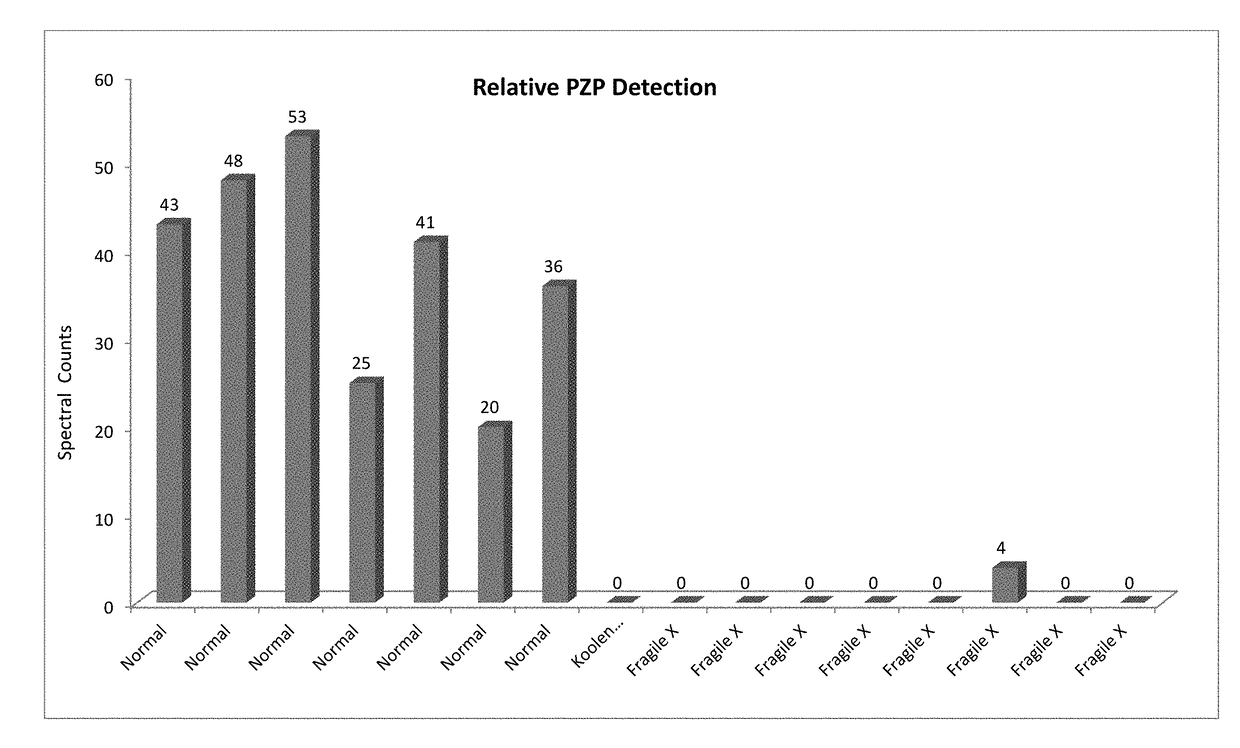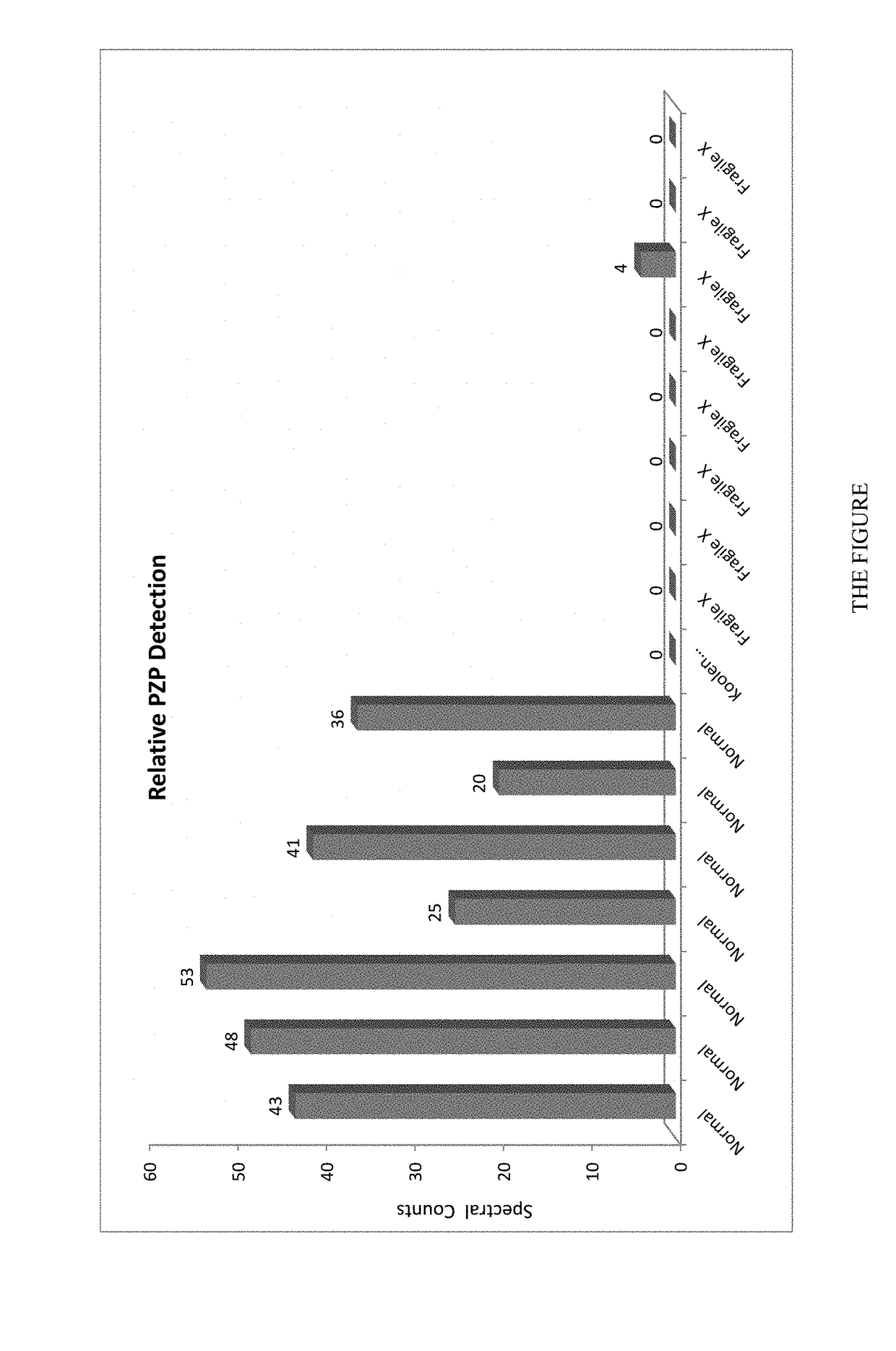Compositions and methods for diagnosing and treating intellectual disabilities
a technology of intellectual disability and compositions, applied in the field of compositions and methods for diagnosing and treating intellectual disabilities, can solve the problems of reducing the life expectancy of intellectual disability, detecting and diagnosing, and not knowing the purpose of pzp in the non-pregnant state, so as to increase or decrease the level or activity of pzp
- Summary
- Abstract
- Description
- Claims
- Application Information
AI Technical Summary
Benefits of technology
Problems solved by technology
Method used
Image
Examples
example 1
Examine a Protein Link Between 2 Disparate Causes of Intellectual Disability
[0048]The current study was initiated with one family, having twin boys both with developmental delays. Twin B was diagnosed at age 3 with Fragile X syndrome. Fragile X syndrome is known as the most frequent cause of inherited ID. It is a genetic disease caused by the hyper methylation of the promoter region of the F MR1 gene and results in the loss of FMRP—(fragile X mental retardation protein) (Hagerman, R. J. et al. Pediatrics 2009; 123; 378 DOI: 10.1542 / peds.2008-0317). It is seen in approximately one out of 4,000 (M) to 6,000 live births.
[0049]Twin A also male, had significant cognitive impairment however a diagnosis was not made until age 14. His diagnosis was a 17 Q 21.31 micro deletion. This was found in 2009 using micro array analysis. His micro deletion was determined to only affect the microtubular associated protein tau gene (MAPT). This micro deletion was first reported by Koolen et al. in 2006 ...
example 2
n Additional Subjects
[0065]Methods.
[0066]Plasma Prep
[0067]Whole blood from Fragile X and normal patients was received on wet ice from a collaborator at Rush University in EDTA tubes. Blood was centrifuged at 4° C. upon arrival at 1500×g, supernate removed and centrifugation repeated. Plasma supernatants were frozen at −80° C. prior to analysis.
[0068]Depletion
[0069]10 uL of each plasma sample was depleted of the top 14 most abundant plasma proteins using a MARS-14 affinity column (Agilent). This is considered best practice for reducing interference from the protein dynamic range exhibited in plasma and serum. Flow through samples were buffer exchanged in dI H2O and quantitated by Qubit fluorometry (Life Technologies).
[0070]Gel Electrophoresis
[0071]20 μg of depleted sample was loaded on a Novex (Life Technologies) 4-12% bis tris gradient SDS PAGE gel and run full length. Each lane was manually excised into 40 segments each representing a fraction of the plasma protein population. Segm...
PUM
 Login to View More
Login to View More Abstract
Description
Claims
Application Information
 Login to View More
Login to View More - R&D
- Intellectual Property
- Life Sciences
- Materials
- Tech Scout
- Unparalleled Data Quality
- Higher Quality Content
- 60% Fewer Hallucinations
Browse by: Latest US Patents, China's latest patents, Technical Efficacy Thesaurus, Application Domain, Technology Topic, Popular Technical Reports.
© 2025 PatSnap. All rights reserved.Legal|Privacy policy|Modern Slavery Act Transparency Statement|Sitemap|About US| Contact US: help@patsnap.com


